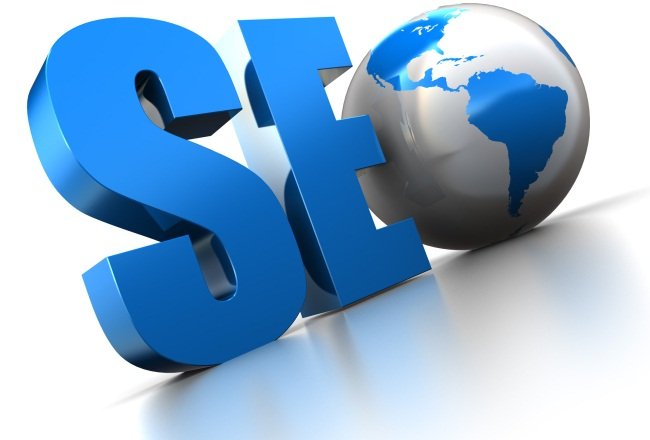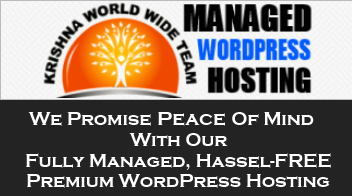Having a website is one thing and driving traffic to it is another. Many webmasters, new bloggers and countless other website owners often wonder about the complexities involved in search engine optimization (SEO).

Your website’s homepage is the most important page of your website and you know it. It is the page where visitors land on your website. A lot of people do great design work on their home page. But design isn’t the only thing that is important. There are things that are important to make your visitor’s experience seamless and to get your website ranked well by search engines.
In this post, I am going to share with you a list of 25 SEO terms you need to know as you continue to build your website traffic:
1. Page Rank
Page Rank is a number between 0 and 10 assigned by Google which indicates how good your website’s overall SEO is. It used to be the most influential factor in ranking of your website. But things changed and it is no more the only thing that matters.
However, the Page Rank still matters. Google runs it’s algorithm 3 to 4 times a year and ranks individual pages of your website. The interesting thing about Page Rank is, even though Google doesn’t value it so much anymore, it is still one of the most popular website metrics among webmasters. For more information on Page Rank and it’s relevance, check out this post.
2. URL Structure
Uniform Resource Locator (URL), also known as a web address, is a specific character string that constitutes a reference to a resource. If a structure uses a particular keyword for determining a page, it ranks higher in search engines. For example, www.website.com/good-url-structure is a much better URL structure than www.website.com/?p=123 when you want to improve your website’s SEO.
URL structures are also known as Permalinks and if you are a WordPress user, you can easily choose your Permalink structure from the Settings menu or using your SEO plugin.
3. Title Tags
The title tag tells your website visitors and search engines what a particular web page is about. Title tag is the most important element of the page from a search engine perspective. Every word in the title tag is important because when people see search results listings, they see the title tags and description of the website there.
Usually title tags are not visible prominently to the visitors because it is shown in the blue bar of your browser. However, search engine bots search for title tags when they are crawling your website.
The title tags should not exceed 70 characters as some search engines do not show characters more than that.
4. Meta Description
This is the section of your web page that contains a brief description about the content of the page. It should tell an accurate description of what the web page is about.
Search engines look for the meta description tags on each page. It plays a very important role in ranking of your website pages. Direct relevance to the page and uniqueness between each page’s Meta descriptions is very significant.
A good meta description should be between 130 and 160 characters.
5. Meta Keywords
Keywords are the terms that people search for while trying to find your site. Although this isn’t the most important element on your website content, it is worth paying some attention.
You should select specific searchable keywords for every page of your website. The keywords should appropriately list commonly searched terms related to the content of your web page.
6. Heading Tags
It is the headline of the page. This is the first thing a visitor sees on your web page as soon as he or she arrives. Headlines are usually same as title tags but headlines are prominently displayed on the page.
Just like title tags, your headline tags must clearly indicate what the web page content is about. Your headline tags get your visitor’s attention and search engines count it.
7. Content Optimization
You may have heard “Content is King” many times. That holds true when it comes to SEO. The better quality you have in your web page content, the higher you rank in search engines.
Your content is the body and the theme of your web page. Contents of the page should be original and must be structured nicely to make it easy to follow for people and search engines alike. It is advised that your web page should not contain lower than 500 words. Longer contents of 1500 and above words are much better and rank higher.
8. Page Exclusions
Many times you want search engine crawlers to avoid visiting certain web pages of your website. You usually can exclude pages of your website from the sitemap and also set the properties of your individual pages for it to be not indexed by search engines. Page exclusion is very useful when you have thank you pages and you want your search pages not to be indexed.
9. Indexing
When a search engine crawls a web page, it copies the contents of the page and indexes URLs and keywords used in the website in its database. This process is known as indexing and the higher rank you get in this indexing, the better for your website traffic through search engines.
10. Internal Linking
Internal linking is a term used for indicating that you provided a link to one page of your website into another page. This is a great SEO technique and it helps your website’s ranking while helping your visitors discover more content on your website.
11. External linking
This is a hypertext link to a keyword or a set of keywords which redirects to a web page on another website. This happens when you refer something of importance on another website in your web pages in any manner.
12. Backlinks
Simply stated, backlinks enable you to keep track of other pages on the web that link to your posts. That means every website that has a link to any of your web pages gets you a backlink.
Backlinks are one of the most important factors search engines still use to rank websites. The more websites link to you, the better ranks your website gets. However, the backlinks that add value are those which relate to your niche. Therefore, you need to be careful about who is linking to you.
13. Broken links
A broken link refers to a hyperlink on your web page pointing to a destination URL that no longer exists. This could be for a variety of reasons such as:
- The destination page has been moved
- The page URL has been changed.
- The website is no longer available
Clicking on a broken link will usually redirect nowhere and you will find a 404 error page. To have a better ranking of your website in search engines, you should make sure your website doesn’t have broken links.
14. DoFollow Links
Every link on any web page is either a normal “dofollow” link or a “nofollow” link (discussed next). These are designed to communicate the importance of the link to search engines.
A normal “dofollow” link tells the search engines like Google to follow the destination URL. When you have a “dofollow” link on your web page, some page ranking benefits will be transferred to the website that the link is pointing towards.
15. NoFollow Links
Because of the importance of backlinks in search engines, it became eminent for search engines to introduce “nofollow” attribute in the HTML code for links.
Nofollow is a value that can be assigned to the rel attribute of an HTML to suggest search engines that the hyperlink should not be followed by the crawlers. Hyperlink with rel=“nofollow” would not influence the link target’s page rank. That simply means that you will have less spammers on your website if you have nofollow attributes enabled external links in the sections that could be spammed (such as comments).
16. Anchor Text
Anchor Text is the visible, clickable text in a hyperlink. Depending on the settings by the webmasters, in modern browsers, it is often blue and underlined so that a reader should understand that the text is clickable.
Anchor texts, when clicked, redirects the reader to a similar document or location for relevant information. Please note that, if the similar two words are hyperlinked for the same URL only the first anchor text counts for page ranking.
17. Images On Pages
We all know that a picture is worth a thousand words. To make our content more interesting and to give it a magazine like presentation, we include some graphics on website pages.
These are embedded in a webpage with the <img> tag within your web page html. Images are also used as background of some web pages. When you include images in your pages, you want to make sure that your images are large enough as search engines like larger images. At the same time, you also want to ensure that your images are optimized to load faster. In short, while images help your search engine rankings, you need to be careful about the quality and size of your images for optimal results.
18. Image Tags
Images are not technically part of the web page file, they are separate files which are inserted into the page when it is viewed by a browser. A web page with one image is actually two files – the HTML file and the image file. The html “img” tag is used to display images on the pages.
Since search engines do not read images directly, the ALT tag is provided for that purpose. It is the ALT tag’s value that tells search engines what a particular image is all about. Similarly, it is very important to mention the height and width of the image within the “img” tag for optimal loading time for your web page.
19. Page Load Speed
Page load speed is the time taken by your website to fully appear to a visitor of your website. Google has announced that it uses page load times as a factor in its search ranking algorithms. That means, faster-loading pages are ranked higher because they provide a better experience for their users.
To increase the page load speed, you should use caching and minimize CSS, Java script uses etc. Use CSS Sprite for image optimization. You may also consider the option of using a CDN service to improve your page load speed.
20. Social Media Mentions
For a better search engine ranking it is important that you install Social Media Buttons on your website. Social media mentions of your website on social networking websites like Facebook, Linkedin, Google+, Twitter, etc. are considered by search engines while ranking websites. Therefore, the more people share your content on these channels, the better the search engine rankings your website gets.
21. Canonical URL Tag
A canonical URL is the preferred version of a set of page with highly similar content either on the same website or at a subdomain (such as in case of CDN implementations). Google supports a format that allows you to publicly specify your preferred version of a URL.
If your site has identical or similar content that's accessible through multiple URLs, this format provides you with more control over the URL returned in search results. It also helps to make sure that properties such as link popularity are consolidated to your preferred version.
You can specify a canonical page to search engines by adding a <link> element with the attribute rel="canonical" to the <head> section of the non-canonical version of the page. Adding this link and attribute lets site owners identify sets of identical content and suggest to Google: "Of all these pages with identical content, this page is the most useful. Please prioritize it in search results."
22. XML Sitemaps
There are two types of sitemap: HTML and XML sitemap. HTML sitemap helps users to navigate easily. XML sitemap is essential for the visibility of a site by a search engine crawler. Both are equally important and essential for a site. The best way to optimize the site with the sitemap is to submit XML sitemap to Google and Bing webmaster tools.
23. 301 Redirects
This tells the search engine spiders that the page has been moved to another page permanently. 301 redirects should be used in the proper place to avoid readers landing on a missing or broken page. 301 redirects are the only mechanism that transfers link connectivity metrics from the old URL to the new URL.
24. Robots.txt
Search engines use programs called bots or spiders to crawl through your website pages to gather information for indexing. As a webmaster, you want this to happen. However, there may be pages on your website and the URLs that you do not want to be found by search engine bots. That is where robots.txt comes into picture.
The elements of your website that you don’t want crawlers to follow, you add them into the robots.txt file. You need to be careful to make sure the URLs you are blocking using robots.txt are not listed in your XML sitemap files.
25. Responsive Design For Mobile Phone and Tablets
Smart phone and tablet are now a part of modern life and it plays an important role in remaining in touch with the world.
Your website should be responsive to cater to mobile and tablet users. Search engines look for this feature and if you have a responsive website, you get points for that in your ranking as well.





Great information. I am not into web development but as a website owner everybody should know these terms. Thank you for a beautiful brief information about these 25 terms!
You are welcome Mayank!
Hi Kumar, Great post here. Thanks to Mr. Singh for putting together these may SEO terms together. I didn’t know many of them. It gives me a good starting place. Thanks much.
Glad you liked it Michael. Thanks for your feedback.
Right article at right time. Thanks Kumar.